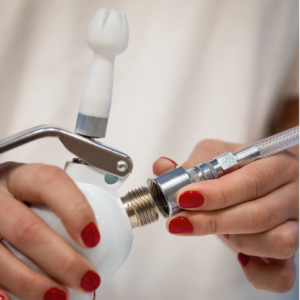Safety Tips For Using Helium Gas
FastGas Blog
Helium Gas is a go-to-go gas (or the safest gas) for people. It is odorless, tasteless, colorless, non-combustible, and an inert (unreactive) gas—the second lightest element after hydrogen.
By being unable to react to other substances or elements, helium can’t burn or cause a fire when used for inflating latex balloons.
Nevertheless, as with any other gas, it is essential always to be cautious and consider some safety facts before manipulating a new element. For instance, exposing a helium cylinder to fire can increase pressure and rupture.
This guide will highlight the most critical safety details for properly using helium gas. Stay tuned!
Helium Cylinders – Safety Guidelines
Helium cylinders are compressed gas cylinders. For this reason, it is a must first to familiarize yourself with the properties and hazards of the material before you are ready to manipulate it. It doesn’t matter if it is generally safe to use.
In other words, while helium gas is mainly associated with fun, it could have fatal results if not handled properly.
As of this premise, we prepared a list of safety facts you might want to look into before thinking of inflating a helium balloon or before inhaling it.
Below are some safety tips that will keep you safe when dealing with helium gas cylinders.
Safe Handling of Helium Cylinders
- Keep the cylinders from children all the time. You can not trust children to use helium gas on their own.
- Always point the balloon and inflator away from your face if inflating balloons. You can stand on one side of the cylinder when opening the valve.
- Wear eye protection when inflating a balloon. If in contact with liquid helium can cause frostbite. Frostbite is damage to the skin and underlying tissues caused by extreme cold.
- Never open the cylinder valve without fitting an inflator; you should then open the valve slowly.
- Never drag a helium cylinder over the ground. Use it constantly in an upright, secured position.
- Use a trolley to move the helium cylinders.
- Do not refill helium tanks with any other different gas. Helium cylinders are exclusively made to contain helium.
- Do not attempt to transfer helium from one tank to another.
- Do not open the valve without the proper regulator in place.
- Do not leave helium tanks unattended or unsupervised.
Sign of leaking?
If you find a leak, turn off the valve immediately, release any extra gas in the filling system, and finally, see if you have attached the filling system correctly.
Inhalating Helium Gas
Contrary to what people think, inhaling helium gas can be dangerous.
Even though it is non-toxic, it can cause injury or death by displacing the air from your lungs, ending in suffocation.
So, is it not safe to try just once at a party balloon?
It’s a classic party trick to suck down a balloon and sound like Daffy Duck every time you do. This last is way too much fun. Doing so many times is then not much fun at all.
It would help if you remembered that helium is an asphyxiant. This gas lowers or displaces the average oxygen concentration in breathing air. Thus, inhaling helium can be hazardous and could lead to death.
If you intend to do it via a balloon (never from the valve or nozzle!), put your mouth over the hole and inhale while squeezing the balloon. Do not just hold the helium in your mouth; breathe it like you would do a normal breath. A maximum of 3-4 seconds is enough to fill your lungs with helium.
Transportation And Storing of Helium Tanks
Whether helium cylinders are safe to use or not is already pretty much evident. However, how to transport and store them are also valuable points to consider.
First, ensure good airflow in the place where you keep the cylinders. You want the tanks to remain at good pressure. This safety tip also counts for the vehicle you use to transport the tanks.
Second, store helium cylinders in an upright position.
Third, under no circumstances let the cylinders be unfastened. When you transport them by truck or any other vehicle, preferably a spacious one, chain the pallets well so the cylinders do not displace or fall.
Fourth, forget about manual lifting; helium tanks are too heavy. Always make sure you’ve got a trolley ready to carry them along.
FastGas Helium Cylinder For Your Next Big Party
We hope that the safety data mentioned above has been of great help. Now you can freely manipulate a helium tank without problems. Just don’t forget to check the safety manual of the bottle you order, so you don’t miss any details!
For the moment, if you want to decorate your next big party nicely, our user-friendly helium cylinder is perfect for filling balloons with helium at parties. The FastGas helium tank consists of a total of 2.2 liters of compressed helium, which equals 30 9″ balloons.
Are you interested in buying helium cylinders in bulk? Contact us directly, and our sales team will prepare a proposal for you.



